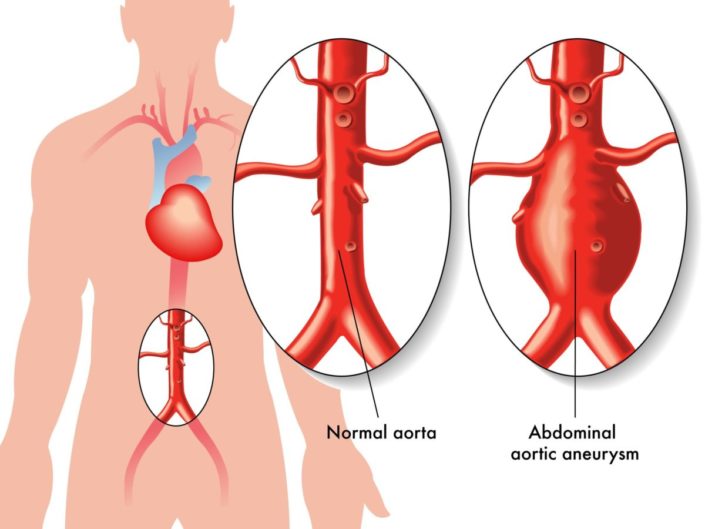What is abnormal uterine bleeding?
Abnormal uterine bleeding is any heavy or unusual bleeding from the uterus (through your vagina). It can occur at any time during your monthly cycle, including during your normal menstrual period.
Symptoms of abnormal uterine bleeding
Vaginal bleeding between periods is one symptom of abnormal uterine bleeding. Having extremely heavy bleeding during your period can also be considered abnormal uterine bleeding. Very heavy bleeding during a period and/or bleeding that lasts more than 7 days is called menorrhagia. For example, women may bleed enough to soak through 1 or more tampons or sanitary pads every hour.
What causes abnormal uterine bleeding?
A variety of things can cause abnormal uterine bleeding. Pregnancy is a common cause. Polyps or fibroids (small and large growths) in the uterus can also cause bleeding. Rarely, a thyroid problem, infection of the cervix, or cancer of the uterus can cause abnormal uterine bleeding.
In most women, abnormal uterine bleeding is caused by a hormone imbalance. When hormones are the problem, doctors call the problem dysfunctional uterine bleeding, or DUB. Abnormal bleeding caused by hormone imbalance is more common in teenagers or in women who are approaching menopause.
These are just a few of the problems that can cause abnormal uterine bleeding. These problems can occur at any age, but the likely cause of abnormal uterine bleeding usually depends on your age.
Women in their teens, 20s, and 30s
A common cause of abnormal bleeding in young women and teenagers is pregnancy. Many women have abnormal bleeding in the first few months of a normal pregnancy. Some birth control pills or the intrauterine device (IUD) can also cause abnormal bleeding.
Some young women who have abnormal uterine bleeding do not release an egg from their ovaries (called ovulation) during their menstrual cycle. This is common for teenagers who have just started getting their periods. This causes a hormone imbalance where the estrogen in your body makes the lining of your uterus (called the endometrium) grow until it gets too thick. When your body gets rid of this lining during your period, the bleeding will be very heavy. A hormone imbalance may also cause your body not to know when to shed the lining. This can cause irregular bleeding (“spotting”) between your periods.
Women in their 40s and early 50s
In the years before menopause and when menopause begins, women have months when they don’t ovulate. This can cause abnormal uterine bleeding, including heavy periods and lighter, irregular bleeding.
Thickening of the lining of the uterus is another cause of bleeding in women in their 40s and 50s. This thickening can be a warning of uterine cancer. If you have abnormal uterine bleeding and you’re in this age group, you need to tell your doctor about it. It may be a normal part of getting older, but it’s important to make sure uterine cancer isn’t the cause.
Women after menopause
Hormone replacement therapy is a common cause of uterine bleeding after menopause. Other causes include endometrial and uterine cancer. These cancers are more common in older women than in younger women. But cancer is not always the cause of abnormal uterine bleeding. Many other problems can cause bleeding after menopause. For this reason, it’s important to talk to your doctor if you have any bleeding after menopause.
How is abnormal uterine bleeding diagnosed?
The tests your doctor orders may depend on your age. If you could be pregnant, your doctor may order a pregnancy test. If your bleeding is heavy, in addition to other tests, your doctor may want to check your blood count to make sure you don’t have a low blood count from the blood loss. This could lead to iron deficiency and anemia.
An ultrasound exam of your pelvic area shows both the uterus and the ovaries. It may also show the cause of your bleeding.
Your doctor may want to do an endometrial biopsy. This is a test of the uterine lining. It’s done by putting a thin plastic tube (called a catheter) into your uterus. Your doctor will use the catheter to remove a tiny piece of the uterine lining. He or she will send that lining to the lab for testing. The test will show if you have cancer or a change in the cells. A biopsy can be done in the doctor’s office and causes only mild pain.
Another test is a hysteroscopy. A thin tube with a tiny camera in it is put into your uterus. The camera lets your doctor see the inside of your uterus. If anything abnormal shows up, your doctor can get a biopsy.
Can abnormal uterine bleeding be prevented or avoided?
If your abnormal uterine bleeding is caused by hormonal changes, you will not be able to prevent it. But if your hormonal changes are caused by being overweight, losing weight could help. Your weight affects your hormone production. Maintaining a healthy weight can help prevent abnormal uterine bleeding.
Abnormal uterine bleeding treatment
There are several treatment options for abnormal bleeding. Your treatment will depend on the cause of your bleeding, your age, and whether you want to get pregnant in the future. Your doctor will help you decide which treatment is right for you. Or, if your doctor decides that a hormone imbalance is causing your abnormal bleeding, you and your doctor may decide to wait and see if the bleeding improves on its own. Some treatment options include the following:
Intrauterine device (IUD). Your doctor may suggest an IUD. An IUD is a small, plastic device that your doctor inserts into your uterus through your vagina to prevent pregnancy. One type of IUD releases hormones, and this type can significantly reduce abnormal bleeding. Like birth control pills, sometimes IUDs can actually cause abnormal bleeding. Tell your doctor if this happens to you.
Birth control pills. Birth control pills contain hormones that can stop the lining of your uterus from getting too thick. They also can help keep your menstrual cycle regular and reduce cramping. Some types of birth control pills, especially the progestin-only pill (also called the “mini-pill”) can actually cause abnormal bleeding for some women. Let your doctor know if the pill you’re taking doesn’t control your abnormal bleeding.
A D&C, or dilatation and curettage. A D&C is a procedure in which the opening of your cervix is stretched just enough so a surgical tool can be put into your uterus. Your doctor uses this tool to scrape away the lining of your uterus. The removed lining is checked in a lab for abnormal tissue. A D&C is done under general anesthesia (while you’re in a sleep-like state).
If you’re having heavy bleeding, your doctor may perform a D&C both to find out the problem and to treat the bleeding. The D&C itself often makes heavy bleeding stop. Your doctor will decide if this procedure is necessary.
Hysterectomy. This type of surgery removes the uterus. If you have a hysterectomy, you won’t have any more periods and you won’t be able to get pregnant. Hysterectomy is major surgery that requires general anesthesia and a hospital stay. It may require a long recovery period. Talk to your doctor about the risks and benefits of hysterectomy.
Endometrial ablation is a surgical procedure that destroys the lining of the uterus. Unlike a hysterectomy, it does not remove the uterus. Endometrial ablation may stop all menstrual bleeding in some women. However, some women still have light menstrual bleeding or spotting after endometrial ablation. A few women have regular menstrual periods after the procedure. Women who have endometrial ablation still need to use some form of birth control even though, in most cases, pregnancy is not likely after the procedure.
Your doctor can do endometrial ablation in several different ways. Newer endometrial ablation techniques do not require general anesthesia or a hospital stay. The recovery time after this procedure is shorter than recovery time after a hysterectomy.
Living with abnormal uterine bleeding
Abnormal uterine bleeding can impact your life in a negative way. Not being able to predict when bleeding will begin can cause you to be anxious all the time. Also, heavy menstrual bleeding may limit your daily activities during your period. For some women, it even prevents them from leaving the house.
If you have heavy menstrual bleeding, try taking ibuprofen (Advil, Motrin) during your period (or a few days before you expect your period, if you know). Ibuprofen is a nonsteroidal anti-inflammatory drug (NSAID). NSAIDs can work to reduce the bleeding during your period.
You also should make sure that you are getting enough iron in your diet. Your doctor may prescribe an iron supplement to ensure that you don’t become anemic.
Questions to ask your doctor
What is the likely cause of my abnormal uterine bleeding?
Is my condition serious? Am I at risk for any other health problems?
Based on the cause, what treatment options do you recommend?
What are the risks and benefits of this treatment?
Will the treatment affect my chances of getting pregnant in the future?
Resources
Centers for Disease Control and Prevention, Heavy Menstrual Bleeding
National Institutes of Health, MedlinePlus: Vaginal Bleeding, Hormonal



